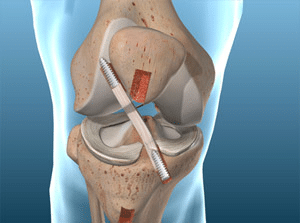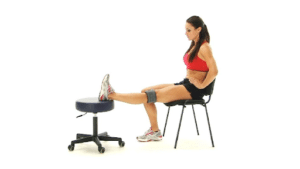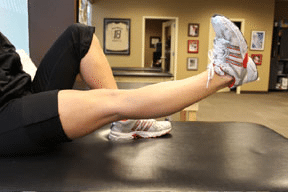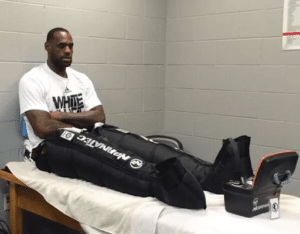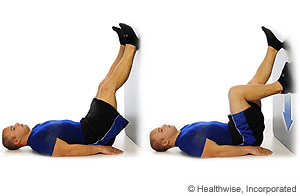Early ACL Rehab Goals
Early ACL Rehab Goals
Anterior Cruciate Ligament (ACL) injuries are one of the most common knee injuries among athletes. It is estimated by the American Orthopedic Society for Sports Medicine that 150,000 ACL injuries occur each year. The majority of these injuries require surgical intervention to repair the ACL. A thorough rehabilitation plan of care following surgery is vital to restore normal knee function. Below are several early rehab goals that we use at Symmetry Physical Therapy within the first few weeks following surgery.
Restore full knee extension ROM – within 1 week after ACL surgery
-
- Early restoration of full knee extension range of motion is required for full recovery. Restoring extension right away reduces the risk of developing scar tissue and arthrofibrosis. Restoring knee extension also allows the quadriceps muscle to activate properly. Knee extension is much more difficult to gain if it is not restored early in the rehab process. Lacking full knee extension may contribute to developing arthritis after ACL surgery. Although slight flexion is a position of comfort following surgery, it is important to minimize this position to avoid loss of extension. We recommend performing low-load stretching for long durations of time by propping your foot up and letting gravity slowly sink the knee into extension.
-
- Exercises: calf stretching, hamstring stretching, heel prop low-load long-duration stretching
Improve quadriceps activation – within 2 weeks after ACL surgery
-
-
- Following surgery, the quadricep muscle becomes weak due to arthrogenic muscle inhibition (AMI). AMI is a neural response that inhibits the central nervous system from being able to fully activate the quadriceps. AMI is common following injury, surgery, or pathology affecting the knee joint. It is important to restore full quadriceps activation early in the rehabilitation process to reduce muscle atrophy.
-
-
-
- Exercises: quad sets, straight leg raise flexion, short arc quads, NMES
-
Diminish pain and inflammation – as early as possible
-
-
- Pain and inflammation are normal responses following surgery. Interventions that reduce pain and inflammation are important early on to restore normal function of the knee. Pain and swelling can shut down the muscles around the knee, especially the quadriceps, leading to further atrophy. Pain and swelling can also contribute to stiff gait and limit range of motion progression.
-
-
-
- Tips: ice, compression wraps, intermittent compression, elevation, ankle pumps
-
Gradually increase knee flexion ROM – within 4-6 weeks following ACL surgery
-
- Loss of knee flexion is less common than loss of knee extension, however, regaining full mobility is equally as important. The goal for knee flexion is 90 degrees within the first week, and full range of motion equivalent to opposite side by 4-6 weeks.
-
- Exercises: Thomas test stretch, prone knee flexion, mini squats, lunges, heel slides
Maintain patellar mobility
-
-
- Full mobility of the patella is required for flexion and extension range of motion. Development of scar tissue and swelling can limit the mobility of the patella following surgery. If the patella remains stiff, the chances of losing range of motion increases significantly.
-
-
-
- Exercises: soft tissue mobilization around the knee, patella mobilizations.
-
Normalize gait pattern
-
- Once range of motion and quadriceps activation have been restored, it is important to normalize the gait pattern. The last early rehabilitation goal is independent ambulation (walking without crutches) and without a limp. Gait pattern education and crutch fitting are crucial early in the rehab process to prevent compensatory patterns. Relearning how to walk properly after a ACL injury can be challenging for some due to compensatory patterns that develop from weight bearing limitations and quadriceps weakness. In order to retrain the nervous system to walk without limitation people often use weight shifting and walking drills
- Once range of motion and quadriceps activation have been restored, it is important to normalize the gait pattern. The last early rehabilitation goal is independent ambulation (walking without crutches) and without a limp. Gait pattern education and crutch fitting are crucial early in the rehab process to prevent compensatory patterns. Relearning how to walk properly after a ACL injury can be challenging for some due to compensatory patterns that develop from weight bearing limitations and quadriceps weakness. In order to retrain the nervous system to walk without limitation people often use weight shifting and walking drills
-
- Exercises: weight shifting, single leg balance, hurdle stepping, backwards walking, grapevine
Conclusion
If you experience physical pain and discomfort you may need physical therapy. We are here to help! At Symmetry, we will provide you with a physical therapy assessment to get to the root cause of your pain. Check out our Youtube channel for more tips and easy to follow exercises videos.
- Exercises: weight shifting, single leg balance, hurdle stepping, backwards walking, grapevine

